OKC officials say a new Thunder arena is worth every penny. Economists aren't sold.
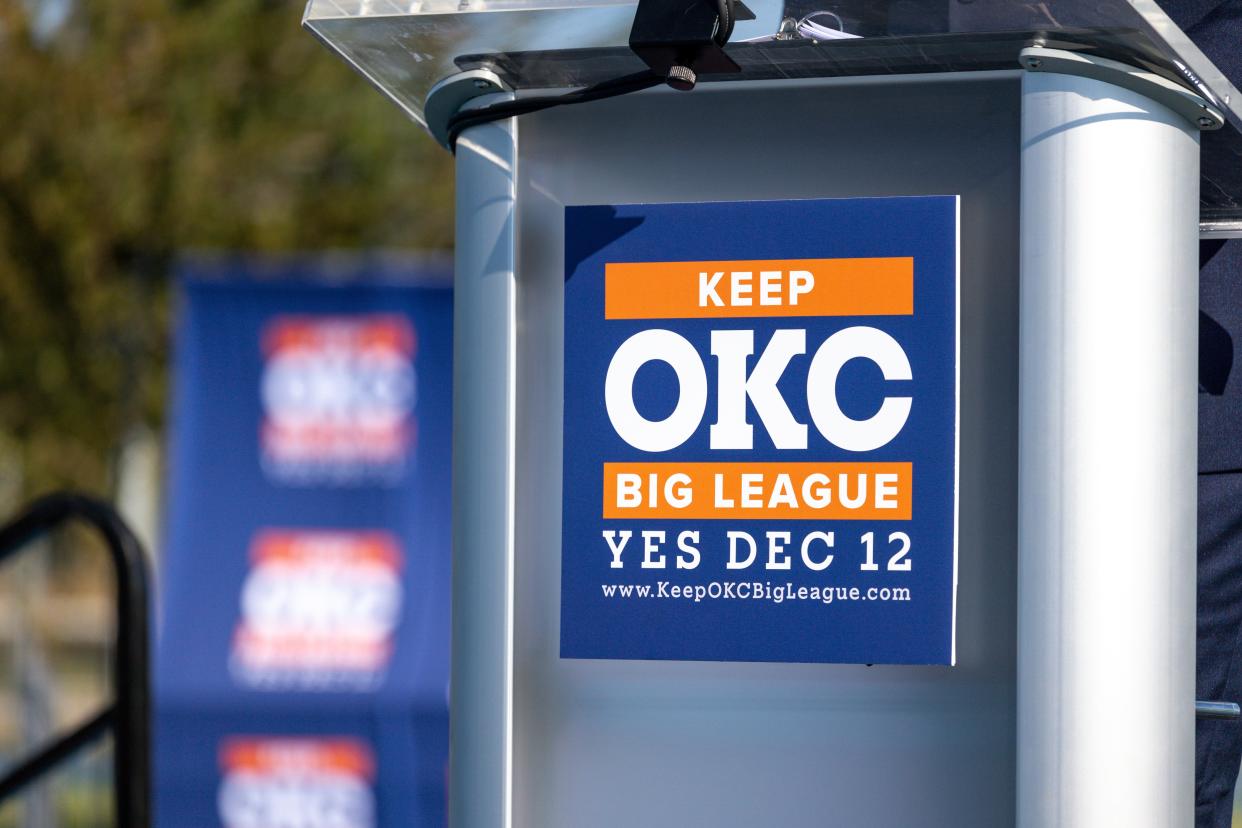
If Oklahoma City residents vote yes on a December ballot proposal to build a new NBA arena to house the OKC Thunder, taxpayers will be footing the bill for 95% of the $900 million project.
City officials argue that the value the Thunder brings to OKC’s overall economy far outweighs the sticker price and justifies the new arena’s construction.
But economists aren’t sold.
OKC's proposal to use a one-cent sales tax to fund the vast majority of the build stands in stark contrast to agreements with NBA teams in other cities, where the team ownerships either paid a much higher percentage of the construction or, in some cases, financed the build entirely.
“It’s poker,” said economist Cynthia Rogers. “That’s what they say. ‘Build it, or we’ll leave.’ ‘If you don’t spend this much, we’ll leave.’ ‘Seattle wants us back, so we’ll leave.’ But if the taxpayers decide to go for this, then they need to be very careful in looking at the contractual terms of the agreement.”
Rogers, an economics professor at the University of Oklahoma in Norman, researches state tax policy, development incentives and urban growth. She told The Oklahoman that academic peer-reviewed research throughout the country is overwhelmingly skeptical about the economic benefit of public financing for professional sports arenas.
“You don’t just get to have an opinion, or cherry-pick data,” Rogers said. “You’ve got to get it through a very grueling process, and the studies just don’t really show causality and they don’t really show it definitively.”
Economic boost of Thunder presence in OKC 'hard to pin down,' experts say
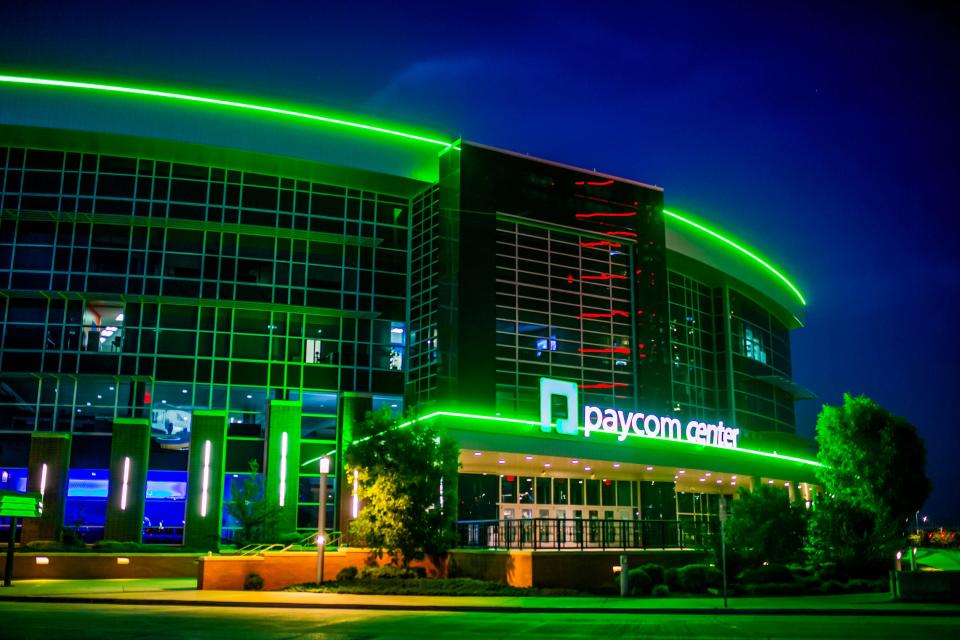
Central to the debate are claims that Oklahoma City’s economy significantly grew after the Thunder brought the NBA to town in 2008.
Rogers admitted that the Thunder has played an "undeniable" role in increasing Oklahoma City's prominence, but said "it’s hard to pin down exactly" how much it has.
Oklahoma City Mayor David Holt, one of the most visible proponents of a new arena, has pointed out that, along with the boost in community identity, Oklahoma City’s gross domestic product grew by 62% and the city’s population rank moved from 31st to 20th nationally since 2008.
“Telling a lifelong resident of Oklahoma City that the arrival of major league sports has no effect on the economy requires you to ignore the evidence of your own eyes,” Holt said.
During a Sept. 12 announcement of the new arena proposal, city officials cited “one economic impact study” claiming the Thunder’s benefit to the city. When The Oklahoman asked to review this study, officials said it was commissioned by the Thunder in 2019 and was not made publicly available because it contained “proprietary information.”
A new study conducted by the Greater Oklahoma City Chamber to evaluate the Thunder's effect on the city will be made available in October.
Cost, timeline, and more: 6 things to know about OKC's proposed new Thunder arena
Sports economist Andrew Zimbalist, however, said Oklahoma City’s GDP already was trending upward in the years before the Thunder even arrived.
“It was a very positive trajectory, and there was a lot of public investment in beautifying the town. And so, what happened after the Thunder came is a continuation of what was there before, and it’s very hard to attribute it to the Thunder itself,” Zimbalist said.
Stlouisfed
Embedded content: https://fred.stlouisfed.org/graph/fredgraph.png?g=19lVc
Data from the US Bureau of Economic Analysis shows that the metro area's GDP rose from $35.7 billion to nearly $61 billion between 2001 and the Thunder’s arrival in 2008. It dipped the next year to $56.5 billion, which coincides with the nationwide recession, but rebounded quickly. The GDP reached $59.4 billion by 2010 and has been mostly increasing since, reaching $86.7 billion in 2021 despite the pandemic.
Proponents of the new NBA arena argue these numbers point to the economic boost provided by the Thunder, but Zimbalist said it isn’t that simple.
“There’s an old apocryphal story of a guy who lives by the railroad tracks, and every morning he wakes up and goes to his bathroom, opens up the window, and then a train comes by. And he concluded that opening up the window made the train come by. But those are two things that happen simultaneously, and it doesn’t mean one thing caused the other thing. You’ve got to do much more analysis.”
How much is OKC's identity worth? NBA arena plans spark debate among local leaders
How have similar proposals worked?
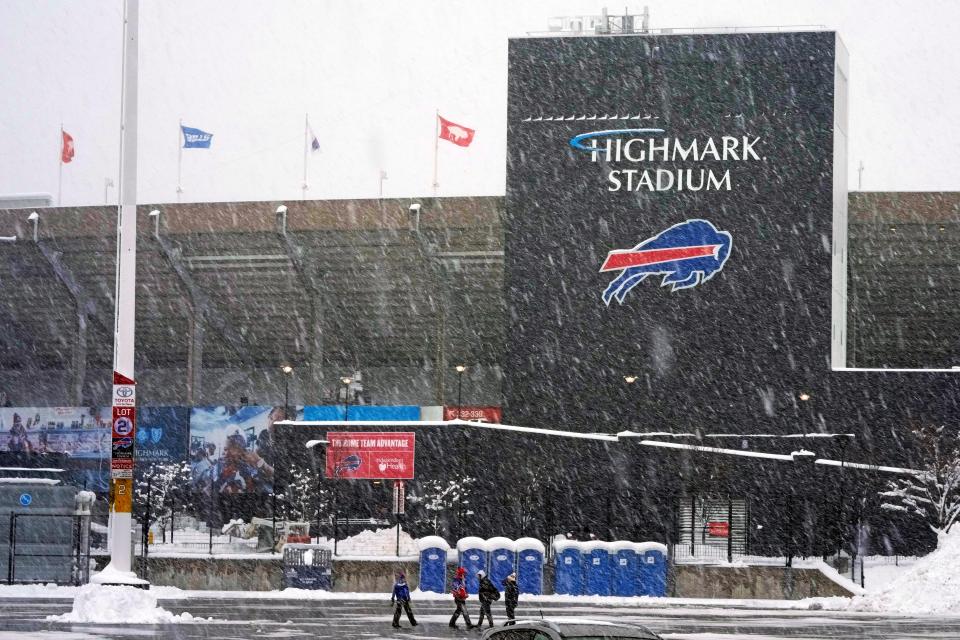
Under the current terms of the arena proposal, the Thunder would not be responsible for cost overruns unless they request changes after the design is finalized.
After similar arena and stadium construction projects elsewhere in the U.S., economists warn against uncapped spending, or holding growth expectations too high.
An ongoing example is the new Buffalo Bills stadium in New York, where costs were first expected to be $1.4 billion but are now estimated to run up to $300 million over the original projection — overruns the NFL team is contractually obligated to cover.
Oklahoma City officials have said they are “comfortable with (their) numbers” when it comes to current projections for the new arena, but several economists believe construction ultimately will surpass $1 billion and question the much-touted return on investment.
“The public just has to understand that they’re putting out money in order to either keep the team or enhance the experience of fans that go to the games,” Zimbalist said. “It’s more of a social and cultural benefit than it is an economic benefit. As a general proposition, arenas and stadiums are not engines for economic development, insofar as is a public cost to them.”
Related: New stadium deal resurfaces puzzling question: Why do owners get taxpayer money to build venues?
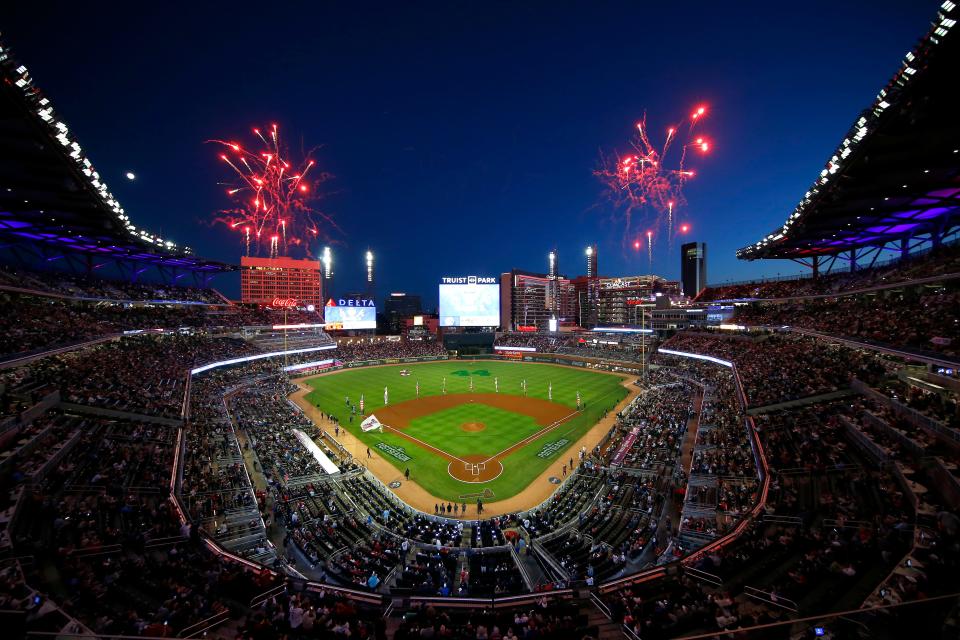
Another example is Truist Park, a Major League Baseball stadium built for the Atlanta Braves and opened in Cobb County during 2017. The ballpark cost $722 million, with $330 million coming from the Braves and $392 million coming from county authorities and community districts.
One report from a Georgia sports economist showed the ballpark running a deficit of about $15 million a year, a debt service that falls largely on local taxpayers. The promised return on investment, according to the report, just isn’t there.
“It’s a public cost to resources, and it needs to be honestly discussed as such,” said J.C. Bradbury, an economics professor at Kennesaw State University in Atlanta. “That money could be going to other things locally. I get wanting to be a ‘big league city,’ but you’ve got to understand that comes with real costs.”
‘Winners and losers’ when it comes to adjacent businesses
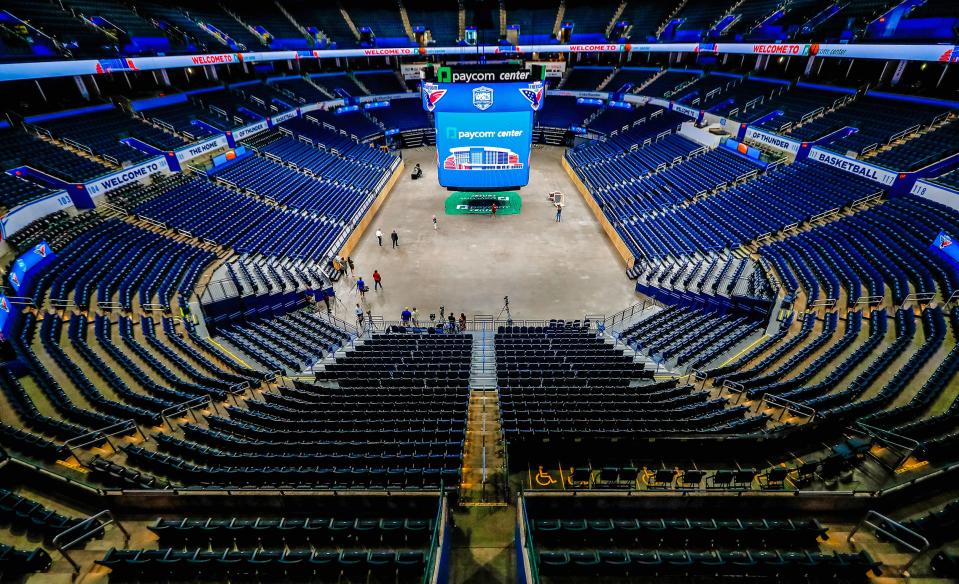
City leadership argues that downtown hotels and eateries surrounding the current arena see their best days during the NBA season because of the increased traffic.
A new arena could do the same, but there are “winners and losers,” Rogers said.
Rogers co-authored a peer-reviewed article in 2019 that examined sales activity from 2002 to 2010 within a five-mile radius of the current NBA arena.
Generally, her research showed that eateries in close proximity to Paycom Center saw increased sales, while entertainment establishments closest to the arena saw a decrease in sales.
This type of "spatial shifting of taxable spending," Rogers said, is often left out of feasibility studies that tend to only consider arena-related spending.
“Attendees may save up to go to NBA games instead of doing other things in town, like enjoying Riversport fun (or) going to Bricktown,” Rogers said. “Shifting where and when spending happens within town does not lead to net new spending or tax revenues.”
'A horrendous deal,' economists warn
A major point of contention even from some supporters of building the new arena has been a pledged $50 million contribution from the Thunder’s ownership toward the arena’s construction — a contribution that would cover 5.5% of the minimum cost.
Zimbalist, who's authored some of the most frequently cited literature criticizing public financing of private sports enterprises, says it's already not a very good deal.
He told The Oklahoman that, unlike baseball or football stadiums, indoor sports arenas are typically funded by significant private financing because they can be used for multiple purposes every year.
“If the city, in fact, puts in 95%, then they’re putting in much, much more than is typical,” Zimbalist said.
Fiserv Forum, which opened in 2018 and hosts the Milwaukee Bucks in Wisconsin, cost $524 million to build, but the Bucks ownership contributed $174 million, or 33%, toward the construction. The Little Caesars Arena in Michigan, home of the NBA's Detroit Pistons and the NHL's Detroit Red Wings since 2017, saw $539 million, or about 63%, of its $863 million construction cost privately financed. And in 2016, Sacramento's Golden 1 Center opened at a cost of $558 million, with the owners of the Sacramento Kings NBA team contributing an estimated $284 million, or about 51%, toward the arena construction.
Bradbury described the new OKC proposal as "one of the worst deals for a basketball arena that I've ever seen." He believes the current agreement with the Thunder is "a horrendous deal" with what he sees as no redeeming qualities.
"$50 million is a drop in the bucket to what's going to be spent," said Bradbury while commenting on the Thunder's pledged contribution. "It's just mind-blowing, and I don't know how anyone could think that's remotely appropriate."
More: How OKC Thunder ownership's contribution to new arena compares to NBA peers
Ultimately, however, economic experts concede that the other "intangible" benefits of pride in an NBA team were not as easy to measure empirically and, from the perspectives of many residents, that continued emotional attachment and cultural boost might matter more.
“Every city context is different,” Rogers said. “Does the Thunder put Oklahoma City on the map? Sure. Is it worth the price tag? I don't know. Are there other ways to put Oklahoma City on the map? Possibly.”
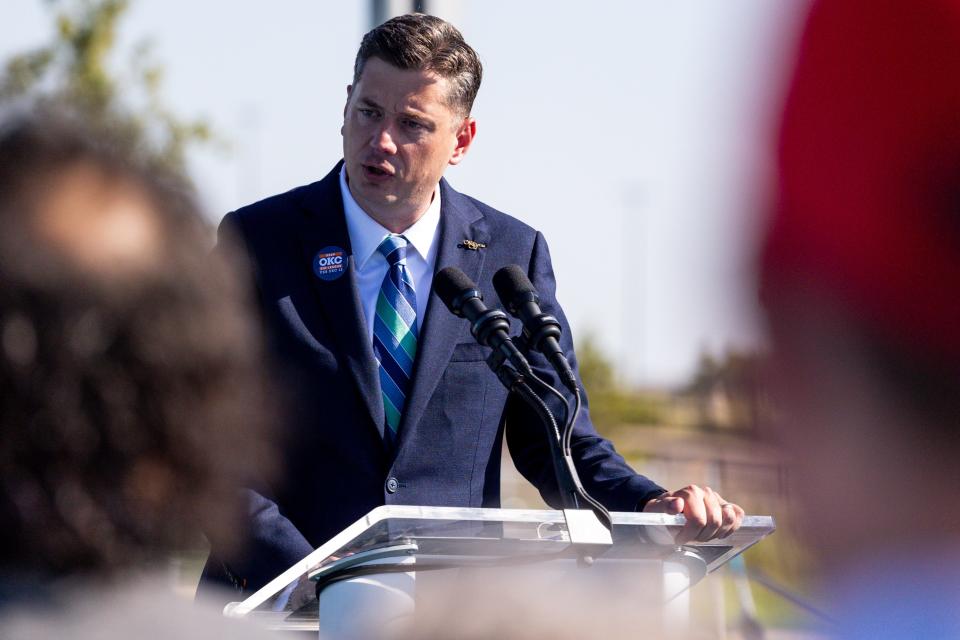
Holt has defended the deal repeatedly, saying he believed the Thunder's $50 million donation was a sign of support toward the city, given how the city had built its past arenas entirely through public funding.
Though the deal may not be perfect, it’s the deal OKC has to work with, Holt explained.
“The deal reflects the market in which we exist, and the market in which we exist is brutally competitive — it’s unforgiving,” Holt said.
“The moment that the community should say we don’t want to move forward on this, 18 other cities are going to start sending in their offers, and then it becomes a bidding war, and the deal will get worse, not better.”
Related: Some readers are asking why approval of a proposed new NBA arena in OKC is being rushed
This article originally appeared on Oklahoman: Is the OKC Thunder NBA arena worth it? Economists say no

